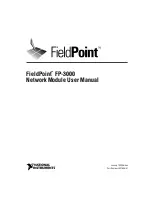
29
Cisco 1751 Voice-over-IP Quick Start Guide
78-11259-05
Configuring Voice-over-IP
Configuring Frame Relay for VoIP
Configuring VoIP on a Frame Relay link involves certain special considerations to ensure acceptable
voice quality. For Frame Relay links with slow output rates (64 kbps or less) and with data and voice
being transmitted over the same permanent virtual circuit (PVC), you should configure the following
parameters:
•
Lower maximum transmission unit (MTU) size—Voice packets are generally small. If you decrease
the MTU size to 300 bytes, large data packets can be broken up into smaller data packets that are
more easily interleaved with voice packets.
The following example configures an MTU size of 300 bytes over serial interface 0/0:
Router#
interface serial 0/0
Router(config-if)#
mtu 300
Note
Lowering the MTU size affects data throughput speed.
•
RSVP—Configure RSVP on the subinterfaces (which correspond to PVCs) to reserve bandwidth for
voice channels. Refer to the section on
“RSVP”
earlier in this guide.
The following example configures RSVP over serial subinterface 0/0.1:
Router(config-if)#
interface serial 0/0.1 point-to-point
Router(config-if)#
ip address 192.168.19.0 255.0.0.0
Router(config-if)#
ip rsvp bandwidth 48 48
•
RTP header compression—Configure RTP header compression on the subinterfaces to minimize the
size of the voice packet. Refer to the section on “
RTP Header Compression
” earlier in this guide.
The following command configures RTP header compression on the selected subinterface:
Router(config-if)#
frame-relay ip rtp header-compression
•
Traffic shaping—Use traffic shaping to control the outbound traffic rate; otherwise, voice packets
can be discarded. In Cisco IOS Release 12.0T, Frame Relay traffic shaping is not compatible with
RSVP. Use generic traffic shaping instead, and set the committed information rate (CIR) equal to
the port speed. This prevents the router from exceeding the CIR rate and discarding the frames.
The following command configures generic traffic shaping with a CIR of 32000 bps:
Router(config-if)#
traffic-shape rate 32000
For further information and more detailed examples of Frame Relay configuration, refer to the
Cisco 1751 Router Voice-over-IP Configuration Guide
.
Note
When you finish configuring the router, you must save the new configuration to nonvolatile RAM
(NVRAM) by copying
running-config to startup-config
. You should also save periodically during
the configuration process. Refer to the
“Saving the Configuration” section on page 13
for details.






































